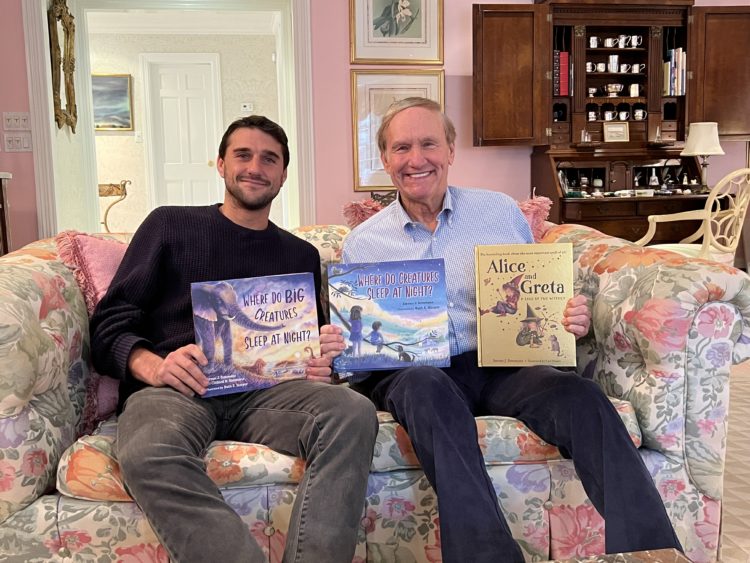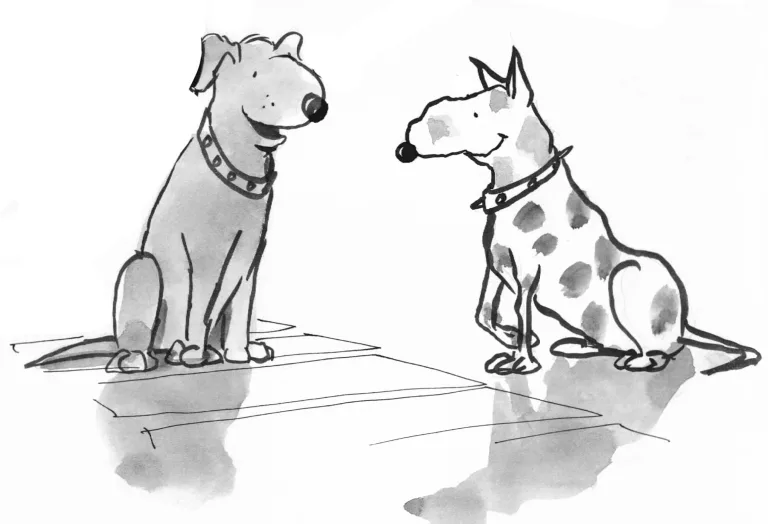Behind the Book: Where do Big Creatures Sleep at Night? with Steve and Cliff Simmons
By Emma Barhydt
Author of many beloved children’s books, such as Alice and Greta, Steve Simmons sat down with us to discuss his new book. His latest book, Where do Big Creatures Sleep at Night?, is a collaboration with his son Cliff Simmons. The book is a follow up to his previous book, Where do Creatures Sleep at Night?. “About five or six years ago, Steve said, “I thought maybe there’d be interest in a book about creatures that children see, where they will see maybe a bunny or a squirrel, butterflies, a frog. But where do these creatures sleep when the children are asleep?”
The next thing on Steve’s list was the illustration. “It’s perhaps the most important feature and most important talent in making a picture book successful,” he said of the illustrations. He was very specific about the kind of artwork he wanted for his book; however, the journey to find such an illustrator was not easy, “I went to some bookstores, looked online, of probably 50 different illustrators.” Steve remarked of his journey to find the perfect illustrator, before finally finding the right person. The right person ended up being Ruth Harper. “I wanted an illustrator that can do whimsical and beautiful artwork.” And so, in 2021, Where do Creatures Sleep at Night? came to be. Followed almost immediately by Where do Big Creatures Sleep at Night?. “I thought that it would be great to co-write this with my son, Cliff,” Steve added.
“When I had been writing Where Do Creatures Sleep At Night?, I asked Cliff, who I knew has been such a creative writer ever since high school to take a look at the text,” Steve explained of his reasoning for co-authoring Big Creatures with his son, “He had great ideas, great creativity, great insights. And I said, ‘Why don’t you write this one with me?’
“It was definitely an honor when I was asked by my dad to join him as a formal co-author for this book after helping out on the first one,” said Cliff Simmons of working with his father. “Growing up, I’ve always been inspired by him doing this, by his Alice and Greta, by Percy [Percy to the Rescue], by Jasper [Jasper: The Fish who Saved a Marriage], and all the books that I grew up reading of his.”
According to Cliff, co-authoring has been an “amazing experience, [Steve] is so creative and so talented, so, getting to work side by side with him has been, yeah, incredible.” While it was a great experience, it was still hard work. “Before we even put pen to paper on any of the individual animals, there’s a pretty intensive research phase that we spend a lot of time on,” Cliff said, “then after that, all the writing sessions and edit after edit, after edit.”
Steve expanded more on the process behind the books, “It’s just a lot of work, a lot of drafts, especially since these are rhyming books.” According to Steve, each book takes about eight months from start to finish. “Once you’ve written the first draft and you’ve worked with the editor, you’ve gotten a lot of different drafts. You then see the illustrations before they’re in full color. And then you’ve got to work back and forth with the illustrations and how they work with suggestions to the illustrator.” Steve continued, “Then you finally see the illustrations set up with the text as they’re laid out by the publisher. And then we even have more thoughts, so we do some final edits.” Then even after the book has been finalized, it takes about a year before it gets on bookstore shelves.
Since Cliff lives in Los Angeles, most of their meetings about the book happened over zoom. “We agreed to be very productive,” Cliff said. Cliff and Steve shared that they had “dozens and dozens” of minimum two-hour sessions regarding the book. Cliff shared, “we would make sure that we came prepped and had done our homework, to make them as productive as possible.”
Since there are just eleven animals in the book, one of the biggest decisions to make was which animals would be included. “We’d divide and conquer a little bit and do research for a whole list of animals before even narrowing down to the ones that we knew we wanted to do,” added Cliff. According to Steve, the process of choosing had some surprising obstacles. “There were certain animals that we were thinking of doing, but there’s so much conflicting research out there that we had to really dig deep and verify.”
The book shows a little bit of what each animal does during the day and then how and where they sleep. We had the privilege of hearing the authors read a page from the book. Cliff immediately knew which he wanted to read, “I love the gorilla. I’ll do this one.”
The silverback gorilla is leader of the band – all the other gorillas follow his command with long, strong arms. The gorilla explores using his knuckles to walk on all fours. He builds a nest on the ground or in a tree where he lies down each night to sleep comfortably.
As for what comes next, Cliff and Steve already have another book in the works set to come out next year: Where do Ocean Creatures Sleep? “Where does a whale sleep? Where does an octopus sleep?” Steve said, “You’ll have to wait.”
For now, you can get Where do Big Creatures Sleep at Night? at Diane’s Books in Downtown Greenwich.





